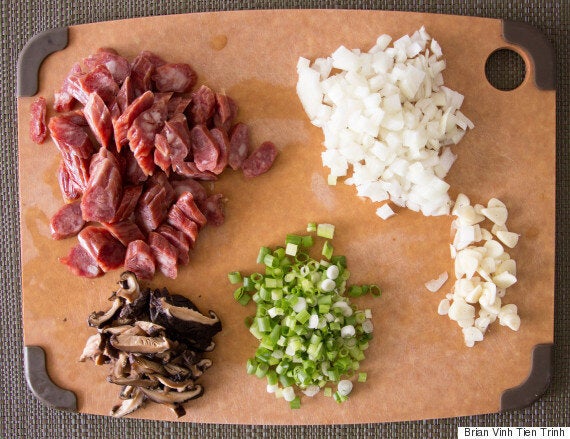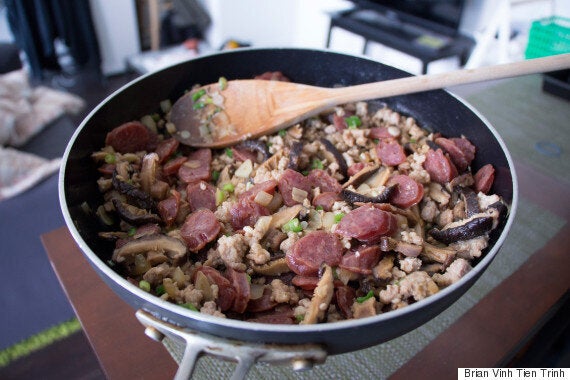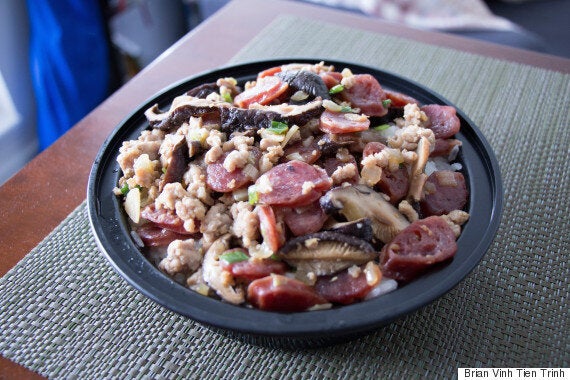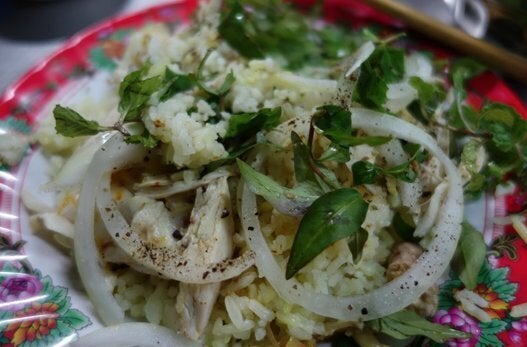
There's a quote from a dead French guy I've always adored and it goes something like this: "Tell me what you eat and I'll tell you what you are."
I love it because I've always considered it true. It's right up there with other facts of life like "everything tastes better with cheese" and "you don't win friends with salad."
But lately the words of Jean Anthelme Brillat-Savarin have got me in an existential crisis.
Who am I?
If you look at what I eat and what I cook, it's the equivalent of throwing a dart at a map.
The easy answer to that question is that I'm Canadian. Few nationalities give you the privilege of good global gastronomy with such ease.
To be part of any ethnic community means you have to work for it.
The complicated answer is that I'm someone longing to reconnect with my Vietnamese roots.
I've made strides with language in the last few years and done a better job to stay in touch with family, but it still isn't enough.
To be part of any ethnic community means you have to work for it. There's work to be done on my part reaching out to the Vietnamese community and lots of homework when it comes to the history of my family and their motherland.
Story continues below the video
But I'm no historian. The only books I crack open nowadays are cookbooks. So I've decided to start there. Food has always been more than fuel for me. Food encompasses history, culture, geography, politics and lately, identity.
Which brings us back to the dead Frenchman's words of wisdom: "Tell me what you eat and I'll tell you what you are."
So this year I'm going to start off with cooking more Vietnamese dishes, and that begins with xôi. Next to phở, it's the only dish I regularly crave.
Xôi sounds like "soy," which confuses the hell out of my friends when I try to explain what it is. More confusing is that it can be served as a dessert when flavoured with fruits like coconut and jackfruit or served as a main dish when you add chicken or pork floss to the mix.
Food encompasses history, culture, geography, politics and lately, identity.
But no matter how you prefer it, at the core is glutinous rice. If you've ever been to Dim Sum and ordered the sticky rice in lotus leaf, you'll be right at home with the savoury versions of xôi.
My favourite variation is xôi lạp xưởng. It's a little odd that one of my all-time top Vietnamese dishes literally translates to "sticky rice with Chinese sausage" but I believe that's a reflection of Vietnamese food in general: we borrow from our neighbours (or depending on where you are in your history books, our colonizers).
I grew up eating xôi lạp xưởng on weekends (sticky rice wasn't a regular carb on the dinner table for us) but remember it the most on road trips as a kid because it was:
1. Cheap and certainly cheaper than the fast-food options at gas stations.
2. Always served in re-used tofu containers (a.k.a. Asian Tupperware) packed by my mom.
3. Meat plus carbs with minimal vegetables? What's not to like?
Having made the dish myself, I can also say it's simple to pull off.
If you live by a Chinese grocery store, you'll have no problem finding the rice and the sausage. The sausages will probably be in the frozen section or hanging dried in bunches from red string. If a supermarket is easier for you, you might find the sausages in the processed meat section. As for the rice, try asking for bags of "glutinous rice."
Eat up,
-BLT
Xôi Lạp Xưởng// Sticky Rice With Chinese Sausages
Feeds 4

You'll need:
- 2 cups of glutinous rice
- 4 medium-length Chinese sausages, sliced width-wise
- 4 cloves of garlic, sliced
- 4 green onions, chopped
- 1 medium white onion, diced
- 1 lb of lean ground pork
- 8 dried shitake mushrooms, rehydrated and sliced
- 3 tbsp of soy sauce
- 2 tbsp of sesame oil
- Ground pepper to taste

1. Start with rinsing the rice under cold water.
I use a rice cooker so I pour the grains into the metal insert, add water and stir until the liquid becomes cloudy. You'll then want to drain the water. Rinse and repeat. No, I'm serious. Do this for another three to four times until the liquid is clear.
2. Level the rice and add an inch of water to cover.
If you're using a rice cooker, set it and forget it. If you're cooking it over a stove top, bring the pot to a boil and reduce heat to a simmer. Stir occasionally and the rice should be cooked after 15 minutes.
3. In a large heated frying pan or wok, add the sesame oil and diced onions.
Cook until soft, roughly five minutes over medium high heat. Add garlic followed by the pork. Cook until the pork is no longer pink.
4. Add sausages, mushrooms and soy sauce.
Cook for another five minutes. Add green onions, remove from heat and give the pan a stir until everything is well mixed.
5. Spoon rice into bowl and top with the sausage and pork mixture. Purists will insist on garnishing with fried shallots -- or do as I do and dig in.

Born And Raised is an ongoing series by The Huffington Post Canada that shares the experiences of second-generation Canadians. Part reflection, part storytelling, this series on the children of immigrants explores what it means to be born and raised in Canada. We want to hear your stories -- join the conversation on Twitter at #BornandRaised or send us an email at bornandraised@huffingtonpost.com.
Also on HuffPost:
